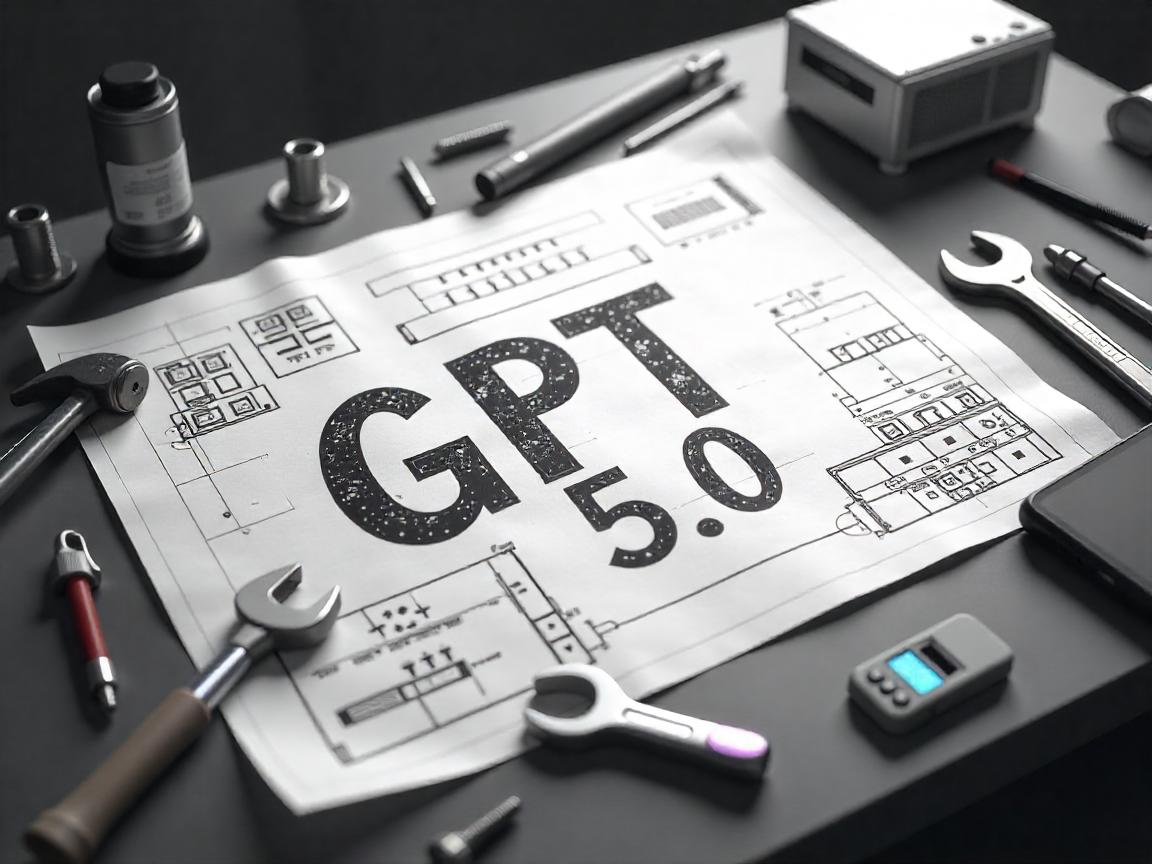
In a move that’s shaking up the AI world, OpenAI has confirmed that GPT-5 is currently in development. Positioned as a transformative leap in artificial intelligence, GPT-5 is expected to bring significantly improved reasoning, more powerful multimodal capabilities, and broader adaptability across industries, from education to enterprise, from content creation to customer care.
“This isn’t just an upgrade. GPT-5 could very well mark the beginning of machines reasoning with a clarity that starts to resemble human logic,” said Dr. Emily Hsu, an AI ethicist and professor at Stanford University.
What is GPT-5?
GPT-5 is OpenAI’s next-generation large language model (LLM), expected to outperform GPT-4 in reasoning accuracy, context retention, and cross-modal intelligence. In simpler terms, GPT-5 won’t just read and write — it will be able to see, listen, and perhaps even interpret video, providing context-rich responses based on multiple input types.
If you’ve ever wished your AI assistant could understand your voice commands, read documents, interpret photos, and then suggest decisions based on logic, GPT-5 is that step closer to reality.
Key Improvements Expected in GPT-5
1. Advanced Reasoning and Logic
GPT-5 is expected to take a quantum leap in deductive and inductive reasoning, making it more dependable for applications that require multi-step logic, comparative analysis, and real-world understanding.
Where GPT-4 could generate impressive narratives but occasionally faltered in critical thinking or cause-effect reasoning, GPT-5 will simulate cognitive workflows more accurately, akin to a trained analyst or domain expert. This makes it a potential game-changer in:
- Legal tech: Drafting and analyzing arguments with logical consistency.
- Finance: Scenario planning and risk-based decision modeling.
- Scientific research: Assisting in literature reviews, hypothesis generation, or experiment design.
Expect AI-powered advisors that go beyond “search engines on steroids” and begin to function more like junior analysts or consultants.
2. Multimodal Input and Output
GPT-5 will accept and generate outputs in text, images, audio, and video, integrating them into a single, unified reasoning engine. For example, it might interpret a medical scan, narrate the findings, and cross-reference it with patient history — all in one session.
This multimodal evolution opens the floodgates for disruption across:
- Healthcare: AI can review X-rays, lab reports, and clinical notes simultaneously.
- Media: Editors could generate multi-format content — text, visuals, voiceovers — using one prompt.
- Education: Personalized learning through voice-guided instruction, visual aids, and interactive text — all AI-curated.
What’s unique is not just the ability to handle different formats, but to contextually synthesize them something no other AI model at scale currently does reliably.
3. Longer Context Memory
GPT-5 is expected to handle vastly longer context windows, possibly hundreds of thousands of tokens, allowing it to retain detail across entire books, legal cases, or prolonged project histories.
This solves a key limitation in existing models that “forget” earlier input in longer chats or documents. With GPT-5, enterprises can build:
- Persistent AI collaborators that track entire workflows or research over weeks.
- Book summarizers and annotators that don’t lose track of character arcs or arguments.
- Code refactorers that understand your entire codebase, not just a file or snippet.
The memory expansion transforms GPT-5 into a contextually aware AI assistant, especially for industries like software development, law, and academia where continuity is critical.
4. Tool Usage and API Control
GPT-5 will likely integrate native API calling capabilities and plugin usage, meaning it can control apps, fetch real-time data, run calculations, or trigger events using external services like Google Sheets, Zapier, or Slack.
This effectively turns GPT-5 into an intelligent digital worker. It won’t just recommend actions — it can take them.
- Sales & CRM: Pull client records, draft personalized emails, and schedule follow-ups autonomously.
- DevOps: Run tests, monitor environments, and deploy fixes through command-line API integration.
- HR and Admin: Schedule interviews, summarize resumes, and auto-generate job descriptions.
We’re entering the age of autonomous AI operations, where human supervision is needed for direction and oversight, not every granular action.
5. Reduced Hallucinations (Increased Factual Accuracy)
One of GPT-4’s most criticized traits was its tendency to “hallucinate”, confidently providing false or fictional information. GPT-5 is expected to significantly improve truthfulness via:
- Retrieval-Augmented Generation (RAG): Fetching live, verifiable data.
- Citations & source linking: Attributing claims to real, trustworthy sources.
- Internal validation loops: Running “double checks” on its own outputs.
This is critical for enterprise adoption. Legal, medical, financial, and technical sectors demand verifiable precision. GPT-5 will be trustworthy enough to act as a research assistant, or even provide first-draft business or legal documents — with built-in disclaimers, references, or confidence levels.
Expect regulatory bodies to soon endorse GPT-powered systems in sensitive sectors — once accuracy is demonstrably higher than human-generated output under time constraints.
GPT-5 isn’t just “GPT-4, but more words.” It’s a shift toward operational AI — tools that don’t just generate content, but think, interpret, act, and improve over time.
“This is the beginning of AI as infrastructure — not just a chatbot, but a general-purpose cognitive layer embedded into apps, organizations, and workflows,” says Marcus Lin, Senior AI Strategy Analyst at DataFusion Group.
Who’s at Risk? Job Categories That May Be Affected
AI’s exponential growth brings incredible promise — but also legitimate concerns about labor disruption and redefinition. With the rollout of GPT-5, the line between task automation and job replacement is blurring more rapidly than ever.
From an analytical point of view, here’s a deeper look at the roles likely to face the greatest disruption:
1. Customer Support Agents
AI Risk Level: High
GPT-5’s advanced language capabilities mean it can handle nuanced, multi-turn conversations, understand sentiment, and even adjust tone — all while integrating with backend systems to troubleshoot and resolve issues instantly.
Call centers that once needed dozens of Level 1 support agents may now operate with fewer personnel, relying on AI to handle FAQs, returns, billing questions, or basic troubleshooting — only escalating highly emotional or unique cases to humans. Companies will save millions in operational costs by deploying GPT-5-enabled virtual agents 24/7 across multiple languages.
2. Entry-Level Writers & Content Creators
AI Risk Level: Medium to High
GPT-5’s coherence and context handling allow it to produce blogs, marketing copy, SEO articles, and product descriptions with minimal human intervention.
Businesses that relied on freelance writers for volume content may now cut down on outsourcing costs. Tools built on GPT-5 could offer “plug-and-play” content generation workflows, reducing the need for junior copywriters. However, creative, brand-driven, or deeply researched storytelling still demands a human touch — creating opportunities for higher-tier content roles to emerge.
3. Legal Researchers & Paralegals
AI Risk Level: Medium
GPT-5’s ability to parse dense legal documents, summarize case law, and generate contracts is growing stronger with fine-tuning and real-time legal data integration.
Large law firms and in-house legal teams are exploring AI to reduce billable hours for routine research and documentation. While AI won’t replace lawyers, it may compress the legal support staff structure, leading to fewer paralegal roles. That said, those who adapt and learn to validate AI outputs and manage AI-driven workflows will become indispensable.
4. Data Analysts
AI Risk Level: Medium
With GPT-5, users can describe a problem in plain language and the AI can respond with data queries, visualizations, and insights. No code needed.
The commodification of analytics through AI means that entry-level data tasks like spreadsheet cleaning, trend plotting, or SQL querying are increasingly performed by intelligent systems. Analysts must now evolve toward data storytelling, ethical interpretation, and strategy alignment — areas where AI still struggles.
“AI can tell you what is happening in your data. But it takes human experience to explain why — and what to do next,” notes Sarah Reed, a data strategy consultant at a Fortune 500 company.
5. Translators & Transcribers
AI Risk Level: High
GPT-5’s multimodal design, including real-time audio and visual input interpretation, enables automatic translation and transcription across multiple languages and accents.
This has immediate implications for roles like medical transcribers, closed captioning providers, and even simultaneous interpreters. While high-context translation (e.g., diplomatic or legal) still requires human nuance, mass market transcription and multilingual subtitling are rapidly automating, especially in industries like media and eLearning.
A Shift Toward Strategic Roles, Not Obsolescence
It’s important to remember: GPT-5 doesn’t eliminate work, it eliminates repetitive tasks. This opens the door for upskilling, retraining, and AI-assisted roles to rise in value.
We’re witnessing the “taskification” of jobs, where roles are broken into atomic units, and AI takes over only the repetitive, data-driven, or rules-based components. The remaining human layer involves judgment, empathy, innovation, and strategy.
Adapt to Stay Relevant
Professionals in at-risk categories can future-proof themselves by:
- Learning to prompt and supervise AI tools
- Specializing in ethical oversight, QA, and human validation
- Focusing on niche knowledge or high-empathy scenarios
- Developing hybrid skills across tech and domain expertise
In the long run, those who collaborate with GPT-5, rather than compete with it, will have the edge in a rapidly evolving workplace.
Major Benefits of GPT-5
Skyrocketed Productivity
GPT-5 takes automation beyond repetitive tasks to cognitive labor, streamlining everything from technical documentation and legal drafts to market analysis and internal reports.
Imagine a marketing manager delegating campaign briefs, slogan variations, and competitor research to an AI that delivers outputs within minutes, complete with sources and formatting. GPT-5 empowers lean teams to operate at enterprise scale, accelerating innovation without proportional headcount growth.
- Legal teams can automate contract reviews.
- Researchers can generate summaries from 200-page studies.
- Project managers can create agendas, risk logs, and action plans from raw meeting notes.
2. Richer User Experiences via Multimodal Understanding
With GPT-5’s ability to interpret and generate not just text but also images, audio, and video, we’re entering a new age of hyper-personalized interaction.
Virtual assistants will now “understand your world visually and aurally”. A user could, for example:
- Show a photo of a skin condition to a health app that analyzes it in real-time.
- Upload a spreadsheet, narrate a question, and receive a written trend analysis.
- Share a product photo and ask GPT-5 to write a compelling eCommerce description.
This creates natural, fluid conversations — blurring the line between human and AI interaction, and unlocking new interfaces for smart homes, retail kiosks, educational apps, and beyond.
3. Cross-Industry Efficiency Gains
GPT-5 will be less of a niche tool and more of a horizontal enabler. Every industry from legal and healthcare to media and manufacturing can integrate it into their operations.
The true power lies in domain fine-tuning and workflow integrations. GPT-5 may becomes a co-pilot for knowledge work:
- Finance: Generate investment memos from analyst notes.
- UX design: Interpret user feedback and propose wireframe improvements.
- Manufacturing: Analyze manuals, error logs, and sensor data to predict failures.
Companies that embed GPT-5 into internal systems (CRMs, ERPs, intranets) will likely see the highest returns through cost reduction, faster delivery cycles, and better decision-making.
4. Accessibility at New Levels
GPT-5’s multimodal capacity opens new doors for inclusive design, allowing users to engage with technology on their own terms regardless of sensory or cognitive limitations.
- Visually impaired users could “ask” the AI to describe images or documents aloud.
- Hearing-impaired users could receive real-time voice-to-text transcriptions during calls.
- Neurodivergent individuals could get content rewritten for clarity or emotional tone.
This goes beyond compliance. It’s about creating equitable digital experiences and opening markets to users who were previously underserved.
5. Hyper-Personalized Learning Tools
Unlike static e-learning modules, GPT-5 can tailor every lesson based on real-time feedback, adjusting complexity, pace, and examples to suit the learner.
- Students struggling in math can receive step-by-step guidance with instant correction.
- Language learners could practice pronunciation and get feedback on grammar and fluency.
- Teachers can co-create lesson plans, quizzes, and class summaries in minutes.
We’re moving toward “just-in-time learning”, where knowledge is adapted to the learner, not the other way around.
Who Will Benefit the Most?
1. Developers & Engineers
GPT-5 can serve as a pair programmer, suggest optimized code, debug issues, and even write documentation or API instructions.
This reduces onboarding time for new devs and cuts development cycles by 30–50%, according to early pilots from several AI-centric firms.
2. Medical Professionals
GPT-5 can correlate symptoms, interpret imaging reports, summarize medical research, and even track patient history in narrative form.
While it won’t replace doctors, it can serve as a decision support system especially in under-resourced settings or during emergencies.
3. Writers & Creators
GPT-5 enables creative professionals to storyboard, plot, edit, and visualize content from mixed inputs including sketches, scripts, or even vague ideas.
It levels the playing field for solo creators, indie filmmakers, and small agencies, who can now produce studio-quality content with micro-budgets.
4. Educators & Students
From real-time tutoring and lesson customization to generating quizzes and flashcards, GPT-5 is the ultimate education assistant.
In countries with overburdened school systems, GPT-5 can supplement teaching, offer after-school help, and close learning gaps at scale.
5. Startups & Enterprises
Lean teams can scale marketing, HR, customer service, and development by plugging GPT-5 into their daily operations.
Think of GPT-5 as an on-demand workforce multiplier. For early-stage startups, it’s the equivalent of hiring a full-stack team for the price of a subscription.
“We’re looking at an AI system that won’t just follow instructions — it will understand intent. That changes everything.”
— Raj Kulkarni, CTO, Vericon AI (currently piloting GPT-5 in early access)
How to Stay Ahead: Human + AI Collaboration
If you’re worried about GPT-5 replacing you, don’t be. Instead, ask: “How can it empower me?” The smartest move is to learn how to work with GPT-5, rather than against it. Use it as a tool to boost your own value — not a competitor.
💬 On a personal note, I’ve experimented with AI tools over the past year and found that the key isn’t just feeding prompts. It’s learning how to steer the AI, how to teach it what matters in your work. That’s where human ingenuity shines





